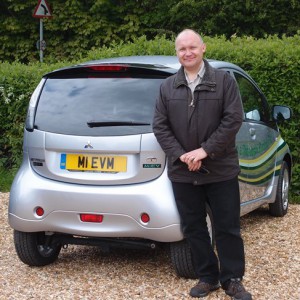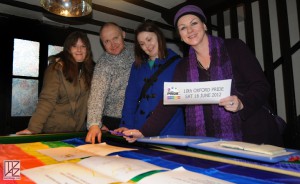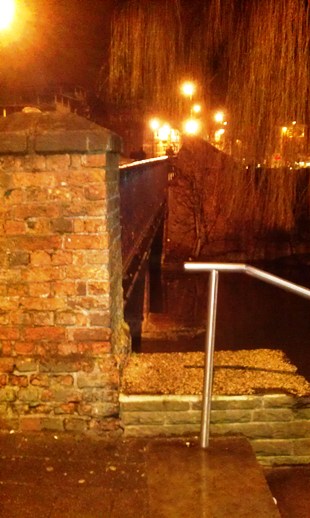I was invited to this event by the City Council’s Head of Law and Governance. He invited several councillors to give perspectives on what our specific roles require from the organisation in order to function optimally. The capacity in which I was invited was as a regulatory chair. I am Chair of Planning Review Committee and vice chair of the Licensing and Gambling Acts 2003 Committee so spoke about both those functions. Other Councillors speaking were Stephen Brown (Scrutiny Chair), Val Smith (Executive Member), Dick Wolff (New Member).

My 5 minute talk was basically just a run through of all the things City Council Officers do that work well for me in my role. I’m pleased to be in the position of not really wanting so much else as our Officers already do such a good job.
I said I would write a blog post with my main points so here they are:
1. Councillors and officers work together but need to remember that we have different roles. Officers are there to represent the council whereas councillors are there to represent the electorate, including those in their wards who didn’t vote or didn’t vote for them. The quasi-judicial nature of regulatory work can be difficult in this context but is not impossible. Members of the public often believe that councillors have more discretion in licensing and planning matters than we actually do and this expectation needs to be carefully and honestly managed.
2. Councillors depend on reports from Officers, as professionals in their fields, so we have the right information on which to base our decision. Reports are most useful when they are concise and balanced. I think they should present arguments on each side of a decision, weigh them up and them make a recommendation. They should indicate how strong the case is in the recommended direction and indicate any conditions that might be appropriate to impose to mitigate any negative effects of a decision in either direction. Reports are for the purpose of informing members, not convincing them, although they will of course have considerable influence on members’ decisions.
3. Site visits are extremely useful. Planning decisions are much better made if Councillors have seen the local context for themselves and I’ve found it extremely useful when Officers have arranged access to the homes of local residents so we can get a first-hand appreciation of the issues. Facilitated meetings both with applicants and objectors are also extremely useful and I’m grateful to Council Officers for providing these. All that Officers can do and provide to help Councillors better understand the context within which they are making regulatory decisions is much appreciated.
4. Councillors are real people so have lives that are tied up in many aspects of Oxford’s life as a City. This can sometimes lead to conflicts of interest when making regulatory decisions. Oxford has first-rate officers in its legal department and they have always provided excellent legal advice on what Councillors might need to consider when deciding whether or not they have a conflict of interest. I am clear that it is the Councillors’ job to decide if there is a conflict of interest, not the Officers’, but also very grateful for the good legal advice that we receive on this. It’s also useful when Officers raise matters with us that we might not have considered – an example of this for me was a few night’s board and lodging from a German Councillor in Bonn as part of the town twinning trip last year. I hadn’t considered for one minute that he might make a planning or licensing application in Oxford at some point!
5. Planning meetings are often contentious as the decisions that are made have direct impact on people’s lives and buildings are often in place for 100 years or more. I like to make sure everyone at the meeting, including the public, is welcomed and knows who everybody around the table is and why they are there. It’s great that we have well-presented Officer reports that use modern technology to make things as clear as possible. I also find it useful to clarify to everyone present that Officers are professionals and experts in their work whereas councillors are democratically elected amateurs who have the job of making the decision. Sometimes people can start being nasty to officers if they are making a recommendation that is against what they want and I think it’s useful as chair to remind such people that Officers as simply doing their job and giving their professional opinion. They are not controlling councillors or making the decision so if anyone needs abusing (and actually nobody ever does!) then it should be Councillors, not officers. I also made the point that if there are difficult issues in a planning application that are related to things that other authorities are responsible for then it’s really useful to have those professionals along to the meeting- these can sometimes be from the highways agency or the highway authority (County Council).
6. Licensing hearings are a bit different to planning meetings in that licensing decisions are more reversible as they don’t often result in buildings being erected! I like to run licensing hearings in a conciliatory and constructive way. While the process inevitably has a winner and a loser I think it’s hugely helpful to run it as a conversation and make sure all parties feel they have had their say and been properly listened to. I am extremely grateful to licensing officers for enabling hearings to happen like this. Good legal advice is also essential to good licensing decisions and I’m pleased to say we enjoy that both during hearings and during the time when the licensing panel is in private to deliberate and make its decision.
7. Council officers are hugely important in making sure that everything presented to committees and licensing hearings is properly evidence-based and has a firm audit trail behind it. So-called evidence that is circumstantial, hearsay or conjecture about what might or might not happen if a particular decision is taken or not taken really is not helpful. Such pseudo-evidence just confuses the decision and inappropriately raises the expectations of the interested parties about what outcomes might be possible. We are very fortunate in Oxford to have Officers who are extremely pro-active in ensuring that responsible authorities and interested parties only bring substantial evidence that will stand up properly.
8. Sometimes Councillors will make a decision that is against Officer advice. That’s right and proper and the way the democratic process works. Such decisions though will often be the subject of appeals, which if allowed can cost the Council (and hence the taxpayer) a lot of money in legal fees. it is thus vital that Councillors receive appropriate Officer support when formulating decision notices that are not what Officers advice. I appreciate that this can be difficult of Officers as Councillors are effectively asking them to justify the position that is opposite to their own. I am nonetheless impressed that planning and licensing officers are able to do this, in full respect of the democratic process and democratic right of Councillors to disagree with them. Again, its a piece of Officer support for which I am extremely grateful.
9. Finally, council meetings and hearings would be pointless if they were not clerked and minuted accurately and efficiently. Oxford has a great Legal and Democratic Services Team and I particularly appreciate the way minutes are always on time, always run past me as chair for checking (and perhaps minor changes) and published promptly. It’s also good to know that some Council Officers read this blog to make sure I’m not saying anything that might bring it into disrepute or cause difficulties that I had not anticipated.
There was not time for any questions but I was pleased to be invited to join the Council’s managers for lunch and I had some more interesting discussions with several I had not met before or did not know other than by email.
A good couple of hours!








